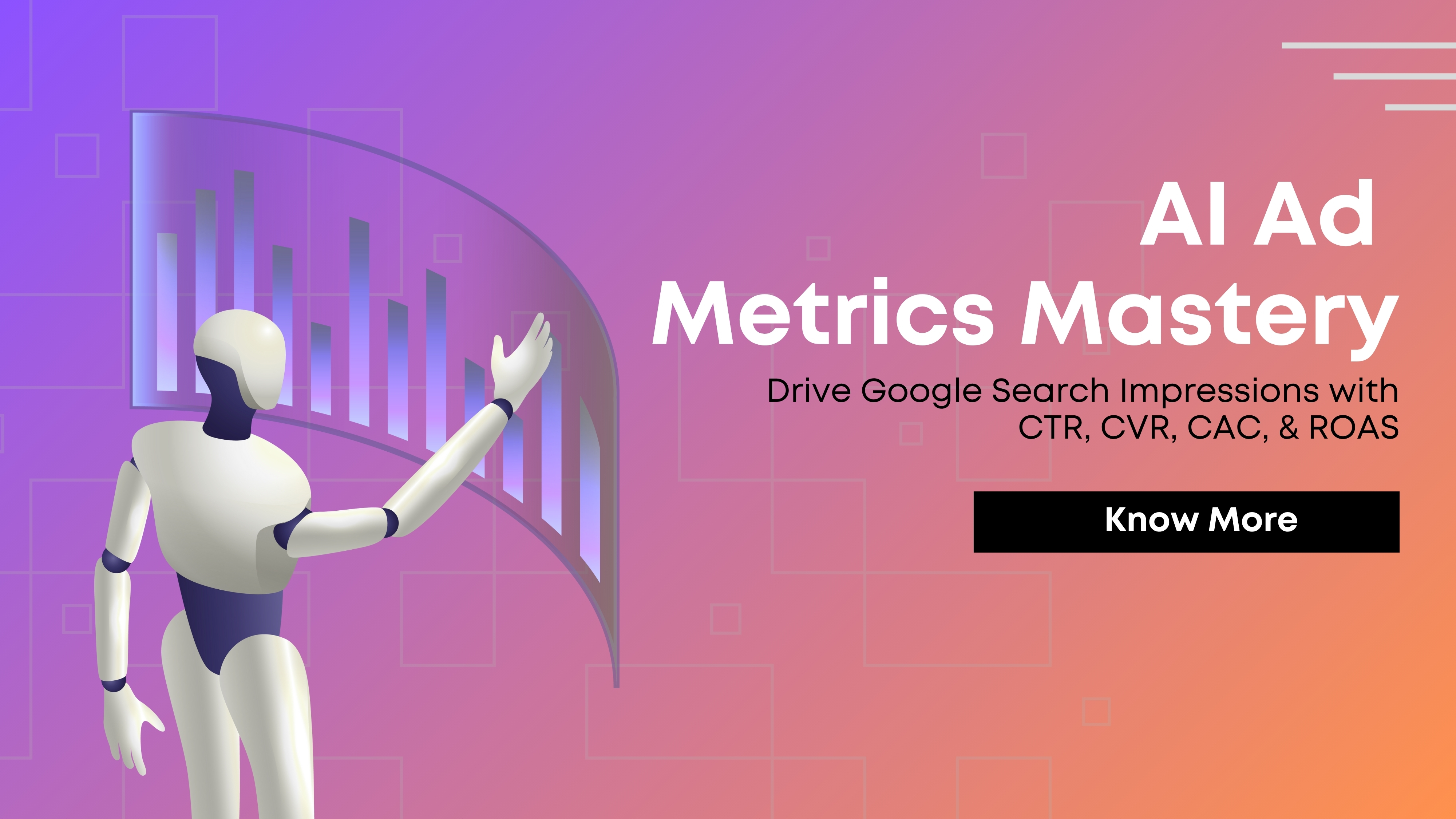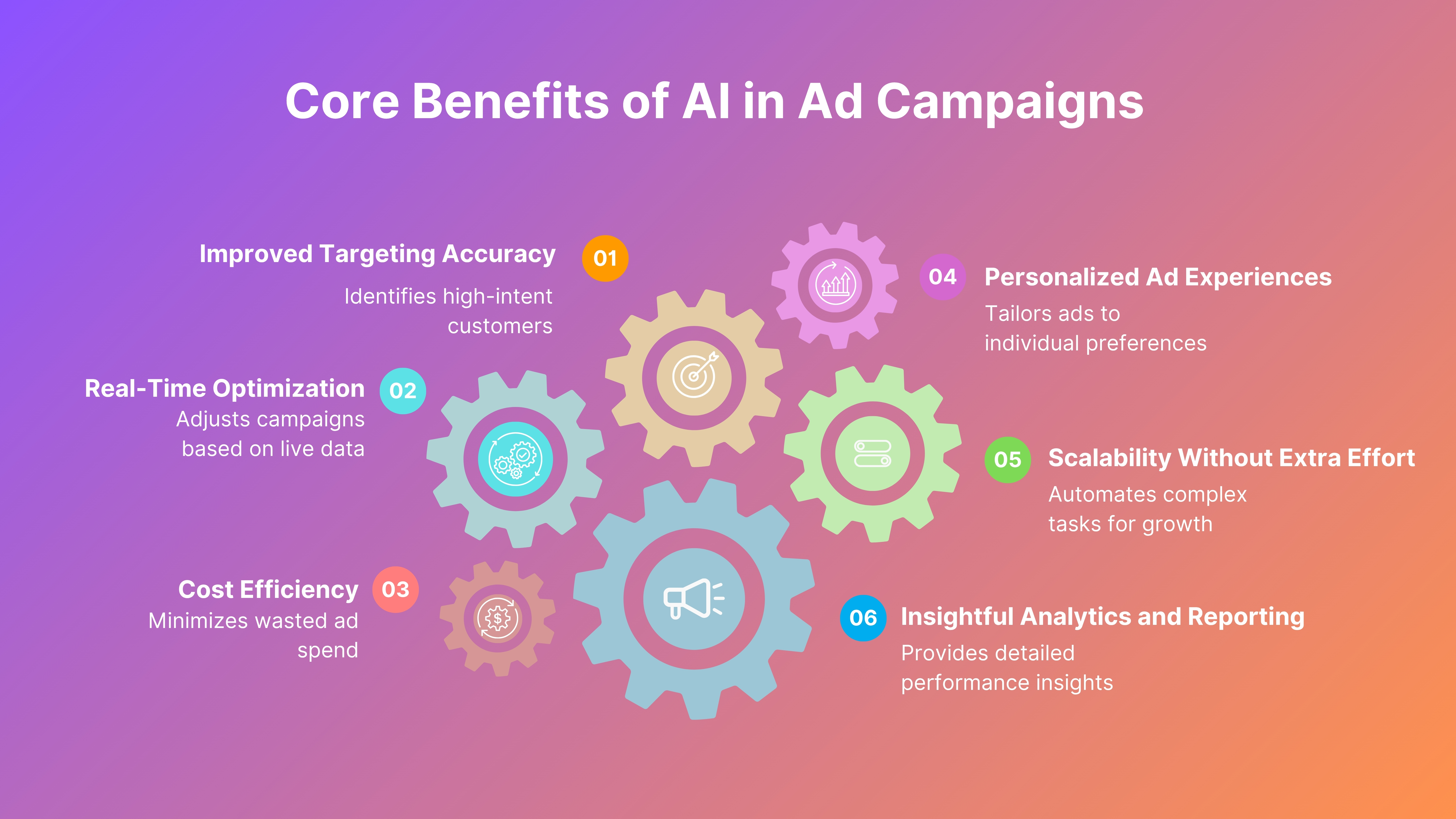AI Ad Metrics Mastery: Drive Google Search Impressions with CTR, CVR, CAC, & ROAS

In the rapidly evolving landscape of digital advertising, Artificial Intelligence (AI) isn't just a buzzword; it's the engine driving unprecedented efficiency and performance. For businesses aiming to dominate Google search and achieve millions of impressions, understanding how AI impacts key ad metrics is no longer optional it's essential. This deep dive will demystify the core metrics of Click-Through Rate (CTR), Conversion Rate (CVR), Customer Acquisition Cost (CAC), and Return on Ad Spend (ROAS), revealing how AI supercharges each one for maximum impact and helps you secure those coveted Google search impressions.
The AI Advantage in Advertising: Shifting Paradigms
Historically, paid search focused on keywords, page optimization, and rankings. Today, AI-powered search tools have flipped the script. But how does this translate into tangible results for your campaigns and, crucially, into high-quality impressions that truly matter? Let's break down the metrics.
From Manual Processes to Intelligent Automation
AI-powered search ads analyze vast datasets from search queries and browsing habits to demographics to decide which ads to show, when, and to whom. This intelligent automation leads to improved targeting accuracy, real-time optimization, and significant cost efficiency. AI processes vast amounts of data from search queries and browsing habits to demographics and device types. This enables ads to reach the most relevant audience segments, those genuinely interested in the product or service. By identifying patterns and signals that humans might miss, AI reduces wasted impressions and increases the likelihood of conversion. For instance, it can detect users exhibiting behaviors similar to previous buyers, even if their search terms differ.
Core Benefits of AI in Ad Campaigns
AI offers a multitude of benefits that directly contribute to superior ad performance:

- Improved Targeting Accuracy: AI analyzes vast data to pinpoint high-intent customers, ensuring ads reach the most relevant audience segments.
- Real-Time Optimization: Campaigns are continuously adjusted based on live performance data, maximizing efficiency.
- Cost Efficiency: AI focuses budgets on high-performing areas, minimizing wasted spend on underperforming elements.
- Personalized Ad Experiences: AI dynamically tailors ad copy and creatives to individual user preferences for deeper engagement.
- Scalability Without Extra Effort: AI automates complex tasks, allowing campaigns to scale without increasing manual workload.
- Insightful Analytics and Reporting: AI tools provide detailed insights into campaign performance, enabling smarter, data-driven decisions.
Decoding Key AI Ad Metrics
1. Click-Through Rate (CTR): Capturing Attention with Precision
What is CTR?
CTR measures the percentage of people who click on your ad after seeing it. A higher CTR indicates that your ad is relevant and compelling to the audience it reaches, directly influencing your ad's quality score on platforms like Google and Meta.
How AI Elevates Your CTR
AI dramatically improves CTR by identifying high-intent customers with remarkable accuracy.
-
AI for Precise Audience Targeting:
AI processes massive amounts of data instantly, identifying patterns invisible to human analysts to create precise psychographic profiles based on interests, values, attitudes, and behaviors. This leads to more personalized messaging that resonates deeply with specific audience segments. Campaigns using AI-refined audience divisions show an average 38% higher engagement rate, with some AI-powered campaigns demonstrating a staggering 131% increase in click-through rates compared to non-AI campaigns. -
Dynamic Ad Creative Optimization:
AI also dynamically adjusts ad copy, selects relevant images, and modifies calls-to-action based on user preferences and behavior, creating thousands of ad variations from a single template to ensure maximum relevance. This precision ensures that your impressions are not wasted, but rather lead to meaningful engagement.
2. Conversion Rate (CVR): Driving Desired Actions
What is CVR?
CVR measures the percentage of people who take a desired action (like making a purchase or signing up) after interacting with your ad or website. It's the ultimate indicator of your ad's effectiveness in driving valuable actions.
AI's Impact on Conversion Optimization
AI-powered Conversion Rate Optimization (CRO) analyzes massive amounts of data to identify key customer patterns and conversion opportunities.
-
AI Chatbots for Real-time Support:
AI chatbots provide real-time, personalized support, answering questions and making recommendations 24/7, leading to a significant boost in chat conversion rates (e.g., HubSpot saw a 43% boost in chat conversion rates). -
Personalized Email Campaigns:
Generative AI tools make it easy to scale personalized email campaigns with minimal manual effort, ensuring that each message feels relevant and timely to the recipient. -
Dynamic Content Generation:
AI video marketing tools can quickly create and customize video content, keeping visitors on your pages longer and leading to higher user engagement and conversion rates. -
Automated A/B Testing:
AI takes A/B testing to the next level by using previous activity to inform its choices and iterating to find the ultimate optimized experience.
3. Customer Acquisition Cost (CAC): Maximizing Efficiency
What is CAC?
CAC measures how much you pay to acquire a new customer or conversion. Lowering CAC is crucial for profitability, especially for businesses with subscription-based models.
AI Strategies for Lowering CAC
AI significantly cuts CAC by automating repetitive tasks, minimizing errors, and enhancing marketing and sales efficiency.
-
Automated Bidding and Budget Allocation:
AI-powered bidding strategies, for example, can reduce cost-per-acquisition by about 30% compared to manual methods. By predicting which users are most likely to convert and dynamically allocating budgets to high-performing keywords and audiences, AI minimizes wasted ad spend. -
Predictive Analytics for High-Value Users:
Some businesses have reported a 15-20% reduction in customer acquisition costs after integrating AI into their ad targeting. AI also personalizes offers and upsells smarter, leading to higher conversion rates and customer lifetime value, making every acquisition more valuable. -
Streamlining Operations:
AI automates routine, repetitive work from data entry and document processing to simple customer inquiries, freeing human workers for higher-value tasks and reducing operational costs.
4. Return on Ad Spend (ROAS): Fueling Profitability
What is ROAS?
ROAS measures the revenue generated for every dollar spent on advertising. It's a direct reflection of your paid campaigns' profitability.
Unlocking Higher ROAS with AI Optimization
AI-driven ad optimization is a core strategy for maximizing ROAS, leveraging machine learning and data intelligence to improve targeting, budget allocation, and real-time adjustments.
-
Predictive Modeling for Optimal Decisions:
AI platforms use predictive modeling to decide who to target, when to show ads, how much to bid, and what creatives to serve. -
Real-Time Budget Reallocation:
This dynamic approach allows AI to shift funds to the best-performing channels or ad sets in real-time, leading to a 30-45% lift in ROI compared to traditional A/B testing methods. -
Continuous Performance Analysis:
AI's ability to continuously analyze performance data and identify underperforming elements ensures that your ad spend is always optimized for maximum return. Some advertisers using AI campaign suites have seen an average 17% increase in ROAS.
The Strategic Imperative for AI-Driven Success
By leveraging AI to refine your CTR, optimize your CVR, reduce your CAC, and maximize your ROAS, you're not just chasing numbers; you're building a sustainable, profitable advertising strategy that resonates with your target audience and drives meaningful growth, ultimately leading to unprecedented online visibility and millions of valuable impressions.
Frequently Asked Questions (FAQs)
Q: How does AI help achieve 1 million Google impressions?
A: AI helps achieve high Google impressions by improving ad relevance and targeting accuracy, ensuring your ads are shown to the most interested users. This leads to higher CTRs and better ad quality scores, which Google favors.
Q: What are long-tail keywords and how do they relate to AI ads?
A: Long-tail keywords are specific, often longer search phrases that users enter when looking for precise information or products (Example - "best AI marketing tool for indie founders"). They typically have lower search volume but higher conversion potential due to clear user intent and less competition.
Q: Is AI replacing human marketers in ad optimization?
A: No, AI is not replacing human marketers; rather, it's transforming their roles. AI automates repetitive tasks, provides data-driven insights, and optimizes campaigns in real-time, freeing marketers to focus on strategic thinking, creative development, and human interaction. AI acts as a powerful assistant, enabling marketers to work smarter and achieve better results, but human oversight and strategic direction remain essential.